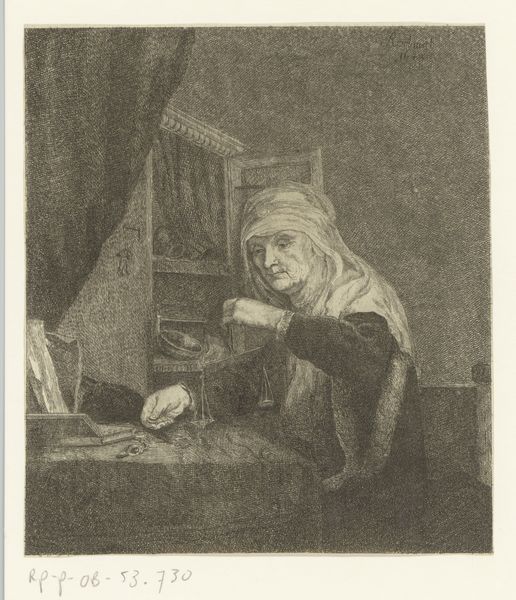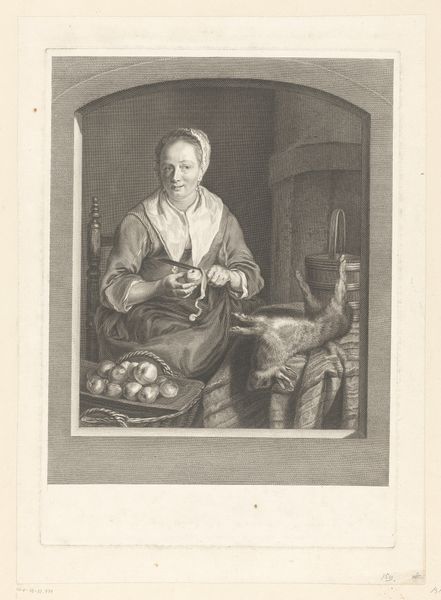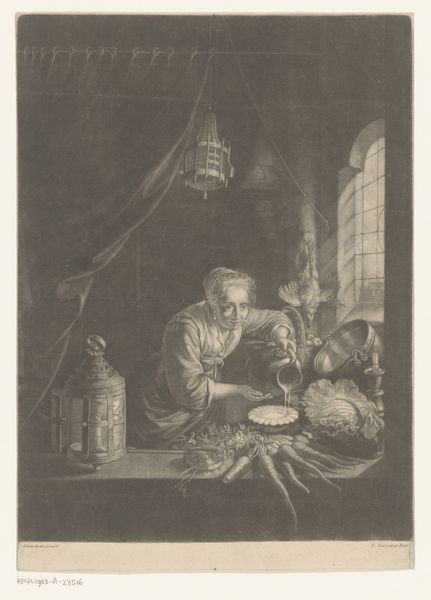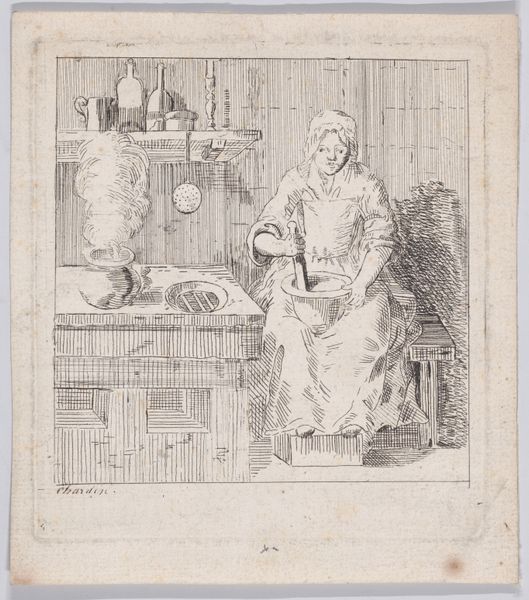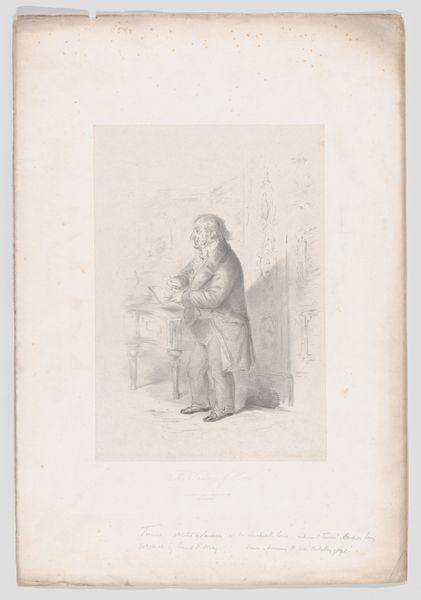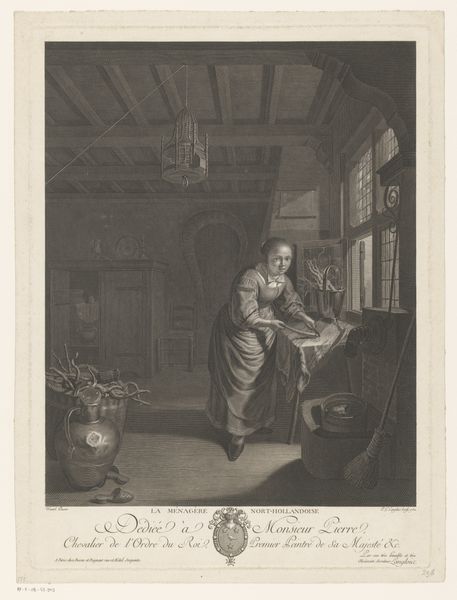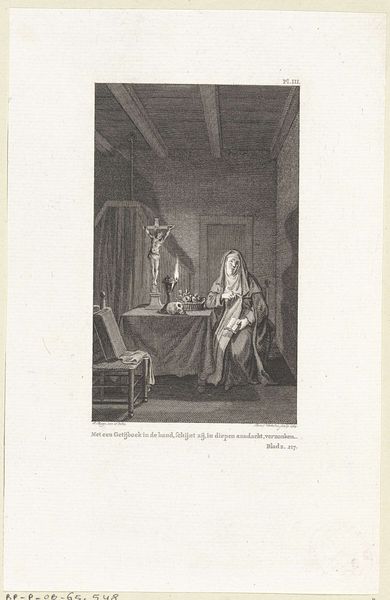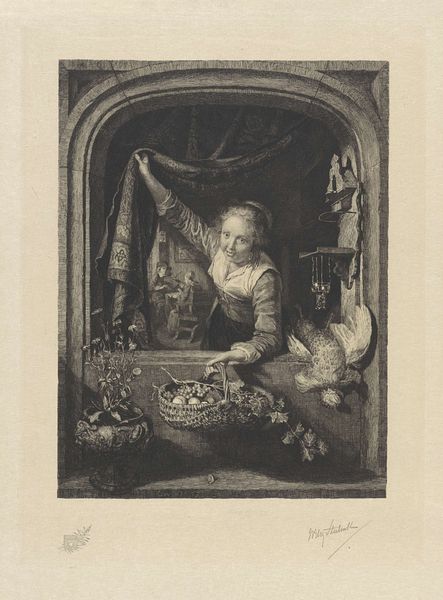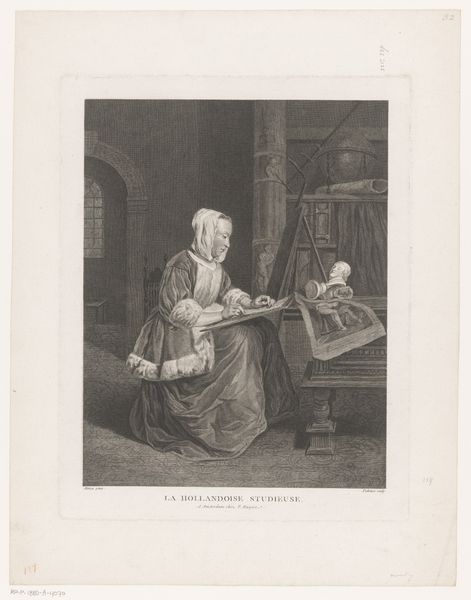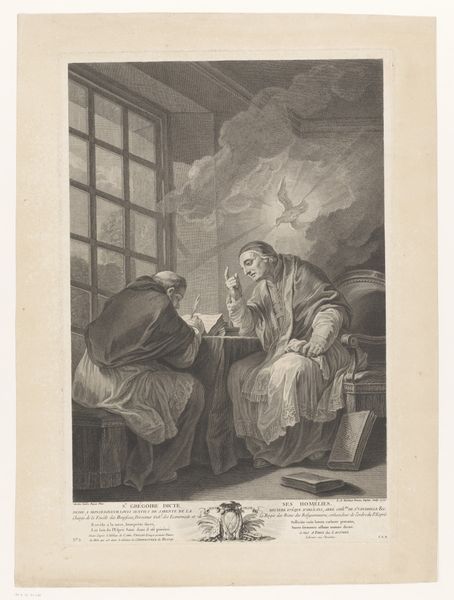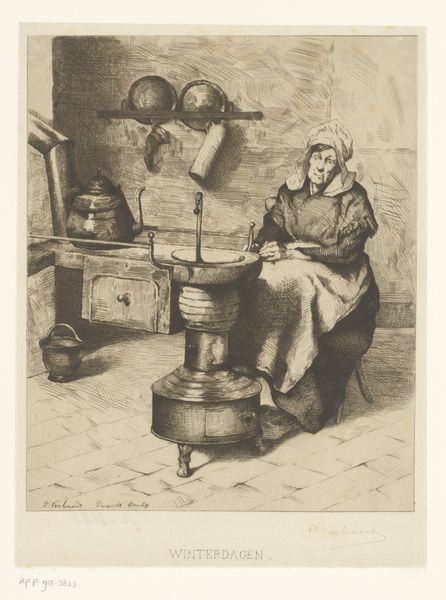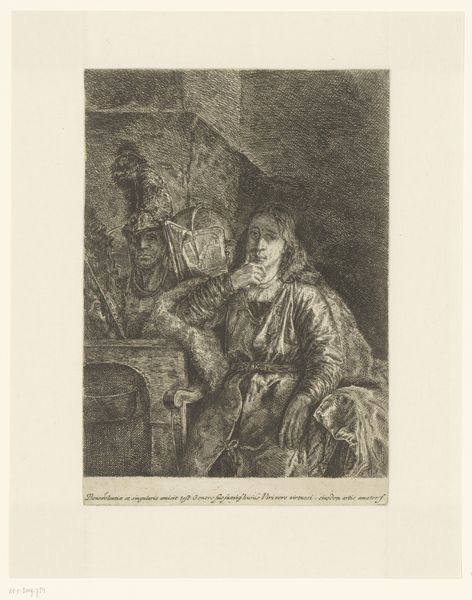
Dimensions: height 324 mm, width 267 mm
Copyright: Rijks Museum: Open Domain
This print by Pierre Charles Lévesque, likely made in the late 18th century, offers a glimpse into the daily life and social expectations of women. The scene depicts a woman in her private space, seemingly contemplating a letter amidst her toilette. The image creates meaning through its attention to the details of domestic life. We can see references to Dutch Golden Age painting. Lévesque was French, and 'La Toilette Hollandaise' suggests a French fascination with Dutch domesticity. How was it that the Dutch came to represent ideas of home and family? The woman's modest attire and contemplative pose could be associated with particular virtues. Is the image a commentary on the social structures of its time? Is it progressive or conservative? Understanding art like this requires us to look at the social, economic, and cultural conditions in which it was made. By studying fashion, material culture, and gender roles, we can gain insight into the world of this image. The meaning of art is contingent on its social and institutional context.
Comments
No comments
Be the first to comment and join the conversation on the ultimate creative platform.
